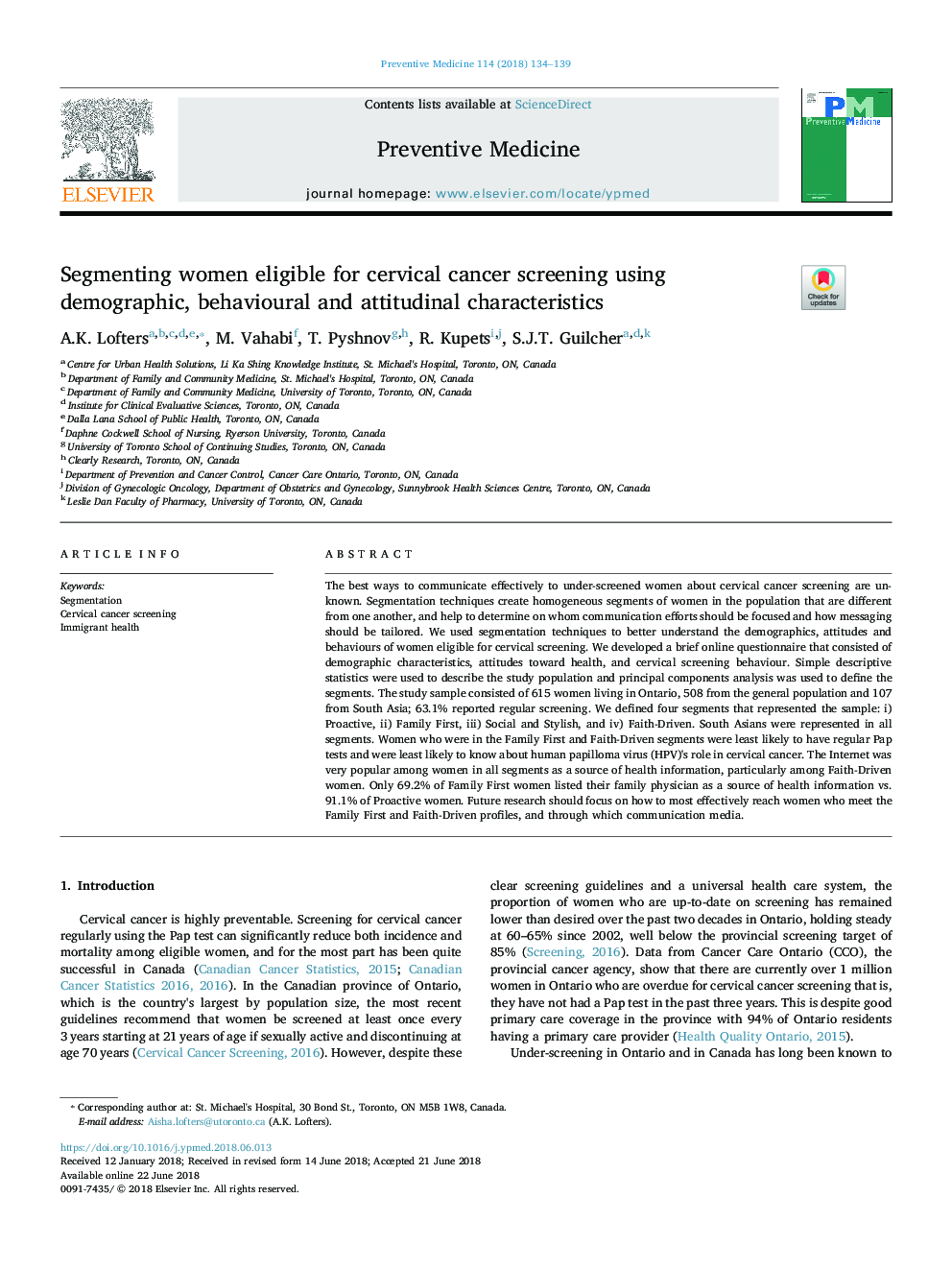| Article ID | Journal | Published Year | Pages | File Type |
|---|---|---|---|---|
| 8693437 | Preventive Medicine | 2018 | 6 Pages |
Abstract
The best ways to communicate effectively to under-screened women about cervical cancer screening are unknown. Segmentation techniques create homogeneous segments of women in the population that are different from one another, and help to determine on whom communication efforts should be focused and how messaging should be tailored. We used segmentation techniques to better understand the demographics, attitudes and behaviours of women eligible for cervical screening. We developed a brief online questionnaire that consisted of demographic characteristics, attitudes toward health, and cervical screening behaviour. Simple descriptive statistics were used to describe the study population and principal components analysis was used to define the segments. The study sample consisted of 615 women living in Ontario, 508 from the general population and 107 from South Asia; 63.1% reported regular screening. We defined four segments that represented the sample: i) Proactive, ii) Family First, iii) Social and Stylish, and iv) Faith-Driven. South Asians were represented in all segments. Women who were in the Family First and Faith-Driven segments were least likely to have regular Pap tests and were least likely to know about human papilloma virus (HPV)'s role in cervical cancer. The Internet was very popular among women in all segments as a source of health information, particularly among Faith-Driven women. Only 69.2% of Family First women listed their family physician as a source of health information vs. 91.1% of Proactive women. Future research should focus on how to most effectively reach women who meet the Family First and Faith-Driven profiles, and through which communication media.
Related Topics
Health Sciences
Medicine and Dentistry
Complementary and Alternative Medicine
Authors
A.K. Lofters, M. Vahabi, T. Pyshnov, R. Kupets, S.J.T. Guilcher,
